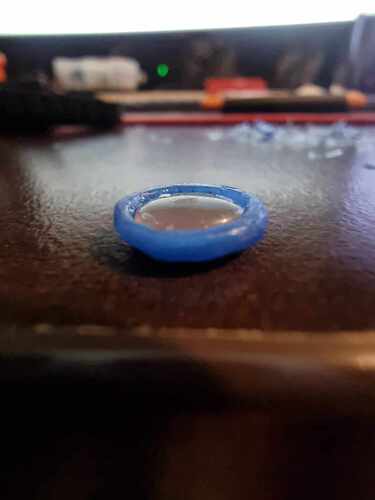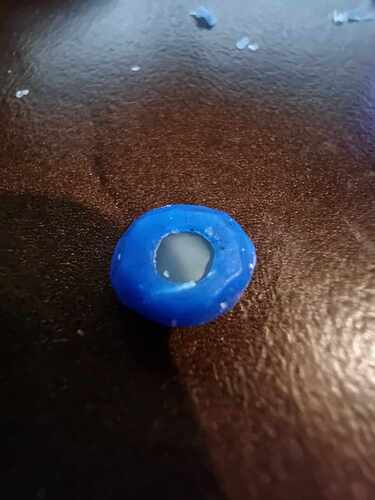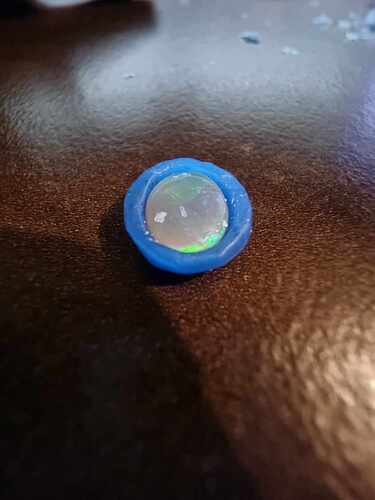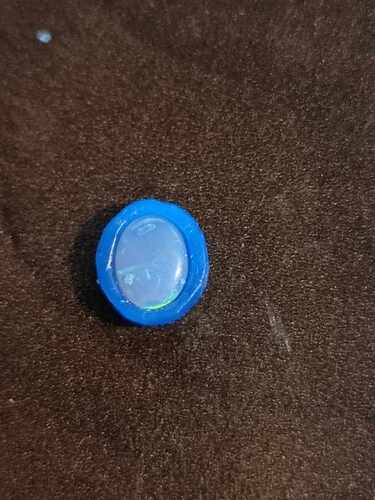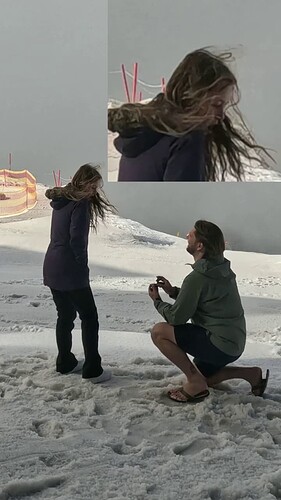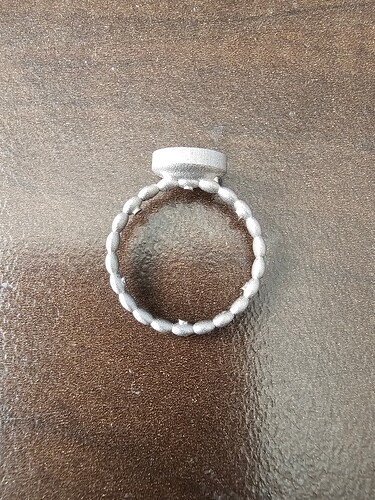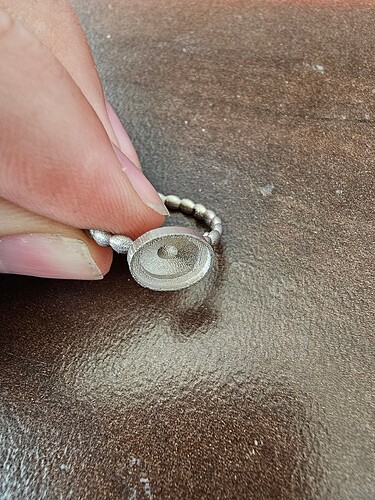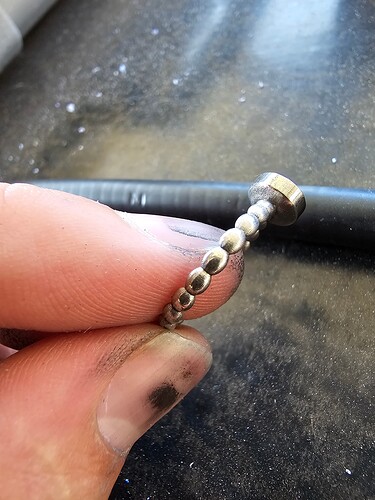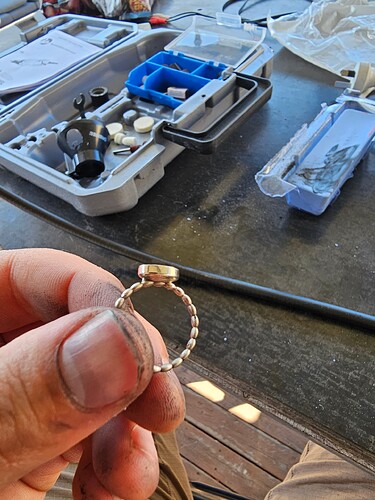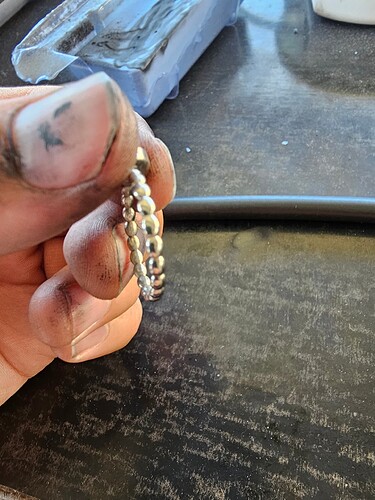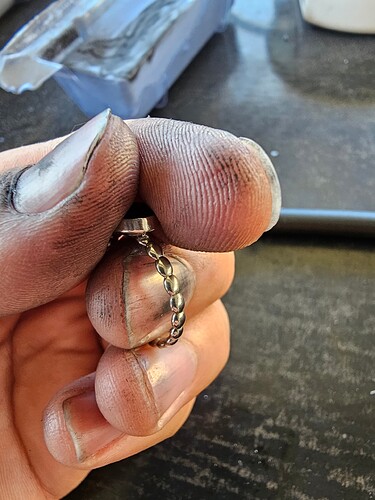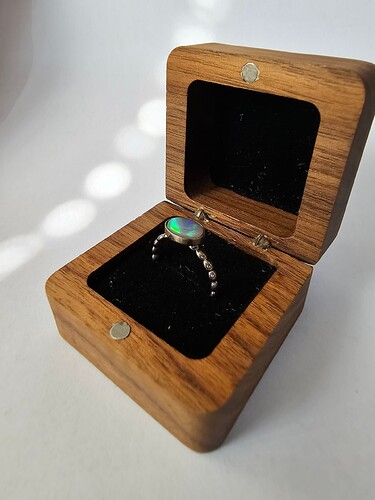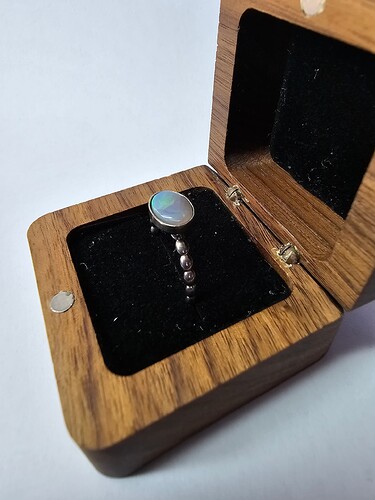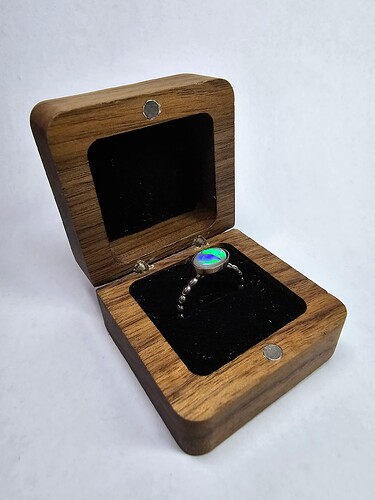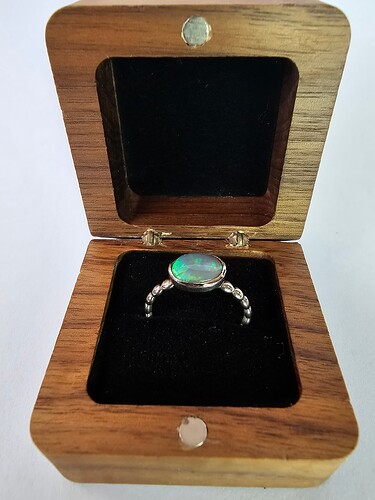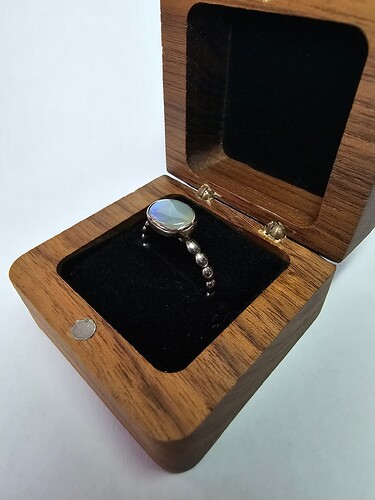Thanks for showing me your original post! Boy, there many deep dive questions and thoughts there! I’m not actually sure where to begin?
But now I think that I understand a little bit better. Please correct me if I’m wrong or am missing anything here. This is what I think I’m reading. You are an absolute beginner who has never made a piece of jewelry before, who is looking for advice to make a 3/D printed engagement ring for your fiancé to be cast in white gold with a handmade bezel set opal.
For an absolute beginner, you did a fantastic job with making your wax bezel!
That said, and this is just my opinion, this is a situation where you should hire a professional jeweler to make this ring for you. As Jo said, an engagement ring is a lifelong, everyday ring. White gold is much harder to work with than yellow gold. A professional jewelry artist can set this stone correctly like how Tjones79 has described.
For sure what Tjones79 said is imperative. You need to practice first. Make an exact duplicate practice ring out of sterling silver with a cabochon stone that is the same size.
But you also describe that you don’t have much time, that there is an approaching deadline.
Based on everything I’ve read in your posts, if you do want to make this ring yourself, gluing the stone (with epoxy) is probably your only option. I think the bezel that you made will work for that. As others have said, it’s not an ideal solution, but it will work. Maybe the stone will fall out at some point, but you can get a new stones and replace them as needed. You can attach the bezel to your 3/D printed model and somehow get it cast, finished and polished. Your finished casting will probably shrink a little bit, so you’ll might need to grind out your setting slightly, but that’s no big deal for jeweler.
Hopefully the cast ring will end up being the correct finger size. Part of what a professional jeweler will do if they make this ring is insure that the finished ring fits. It doesn’t sound like you have the equipment to size a white gold ring if it’s ends up being the wrong size. (that happens all of the time in casting)
Again, having a professional make this ring for you is without a doubt the best solution. Making a practice ring out of sterling silver is the second best idea. If you don’t want to do that, from what I’ve seen gluing the stone will work. It’s not ideal, but I’m pretty sure it will work.
I’m so sorry to sound discouraging, but I want you to be successful in getting the ring that you want within your deadline. I very much wish you the best of luck! Huge congratulations on your upcoming engagement and marriage!!
Jeff
